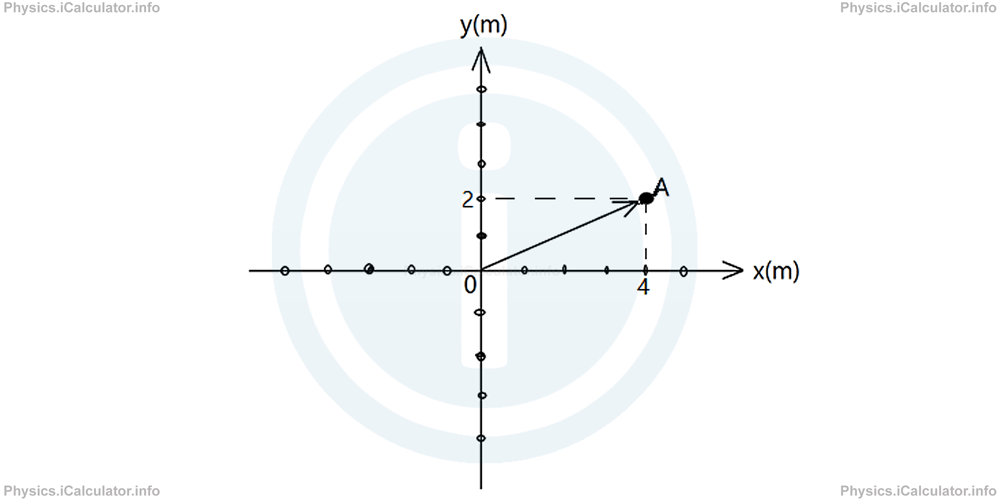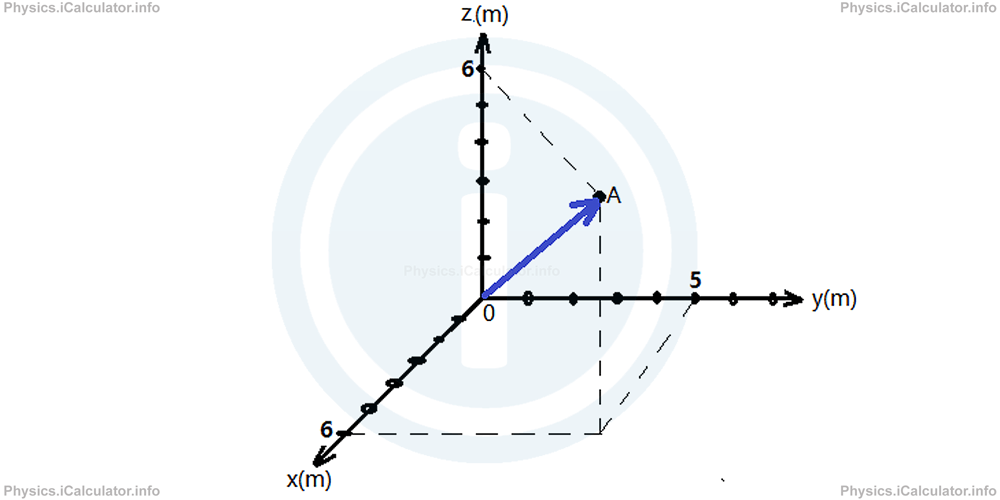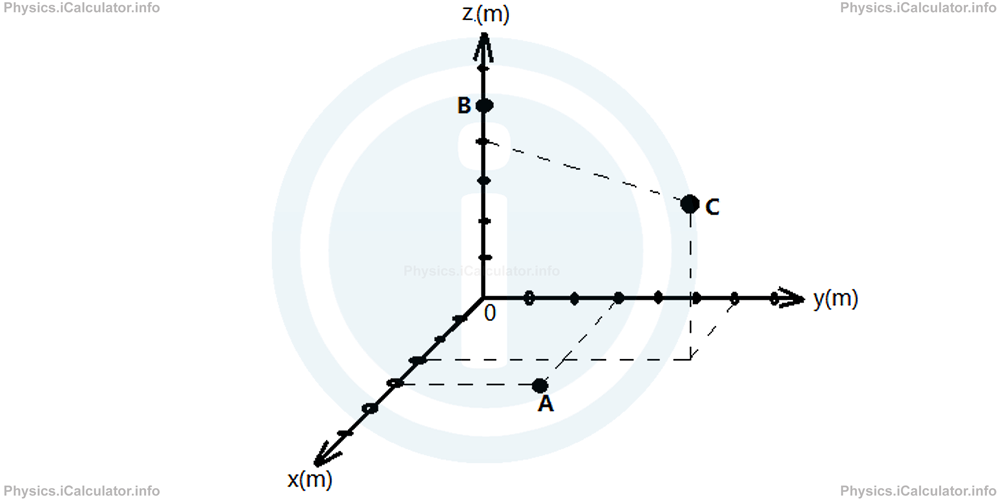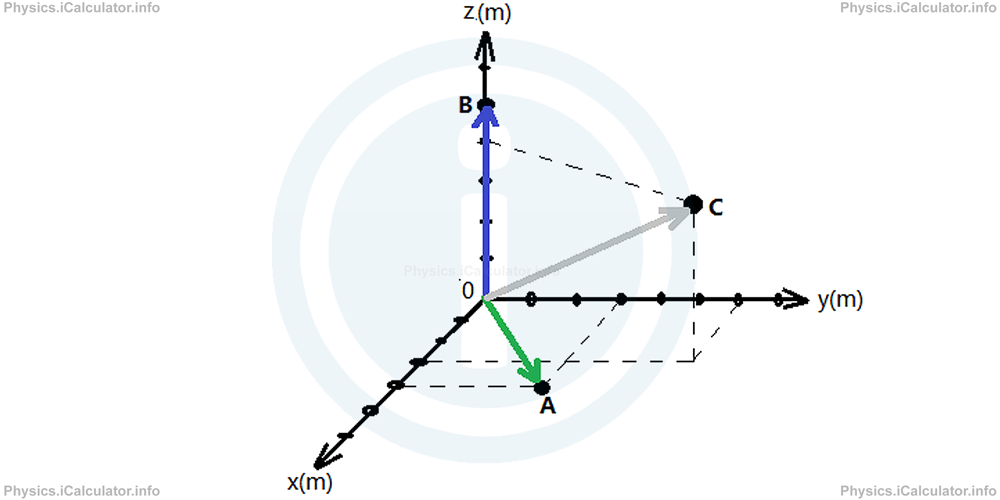Menu
Physics Lesson 3.2.3 - Position in the system of coordinates
Please provide a rating, it takes seconds and helps us to keep this resource free for all to use
Welcome to our Physics lesson on Position in the system of coordinates, this is the third lesson of our suite of physics lessons covering the topic of Position, Reference Point, you can find links to the other lessons within this tutorial and access additional physics learning resources below this lesson.
Position in the system of coordinates
It is known that in a system of coordinates we can assign a letter to each direction available. Thus, if there is only one direction available (1-D) as shown in the above figure, we denote the axis by the letter x and the object's position by the vector x⃗ or Ox)⃗. We can write
and
When two directions of motion (2-D) are available, we can express the position of an object using a pair or coordinates (one for each direction). We must use two letters (usually x and y) to label the directions. Therefore, we need to know both coordinates to determine the location of an object in 2-D. Look at the figure below:

From the above graph, we can see that the object A is 4m on the right and 2m above the reference point. Therefore, we say the position of the object A is at (4m, 2m) and by this, we understand that the position of object A is represented through the vector
and the object A is
= √4m2 + 2m2
= √20m2
= 4.47m
away from the origin in the direction of the vector OA⃗.
Likewise, we can use the same approaches in 3-D (in space) as well. We have another direction added in this case. Usually, it is denoted by the letter z. Therefore, we must write all three coordinates to determine the position of an object. Look at the graph below.

The object A is in the 3 dimensional space. It is diverted 6m from the origin according the x-direction, 5 m from the origin in the y-direction and 6m from the origin in the z-direction, all in the positive direction. This means the components of the vector OA⃗ which represents geometrically the linear distance from the origin, are OAx = 6m, OAy = 5m and OAz = 6m respectively.
From the concept of vector's magnitude, we know that
Therefore, substituting the values, we obtain for the magnitude of the vector OA⃗
= √36m2 + 25m2 + 36m2
= √97m2
= 9.85m
≈ 10m
Thus, the object A is nearly 10m away from the origin (reference point) in the direction of the vector OA⃗.
Example 1
Write the position of the objects A, B and C shown in the figure. How far are they from the origin?

Solution 1
The object A is in the xOy plane. It has no z-coordinate, so we need to know only two coordinates to show its position.
From the figure, we can see that Ax = 4m, Ay = 3m (and Az = 0m). Therefore, the position OA⃗ of the object A is
The distance from the origin of the Object A is found by calculating the magnitude of the vector OA⃗. Therefore, using the known procedure explained in the article "Vectors and Scalars" for calculating the magnitude of a vector, we can write
Substituting the values, we obtain for the magnitude of the vector OA⃗
= √16m2 + 9m2
= √25m2
= 5m
This means the point A is 5m away from the origin in the direction of the vector OA⃗.
The same procedure is used for the other two objects. Thus, for the object B we have only one coordinate Bz = 5m as it lies on the z-axis only. It is not necessary to calculate the magnitude of the vector OB⃗ as it is clear that |OB⃗|= 5m.
As for the object C, we can see from the figure that it contains all three coordinates. Thus, Cx = 3m, Cy = 6m and Cz = 4m. Therefore, the magnitude of the vector OC⃗ which represents the position of the object C (its linear distance from the origin), is
Substituting the values, we obtain for the magnitude of the vector (OC)⃗
= √9m2 + 36m2 + 16m2
= √61m2
= 7.81m
Therefore, the object C is 7.81m away from the origin in the direction of the vector OC⃗.
The figure below shows the position vectors for the three objects.

Remark! The 1 and 2 dimensional motions are special cases of the 3 dimensional motion. We can either write 0 in the place of the missing coordinates or simply represent the position in as many coordinates as given. We can illustrate this aspect using the position of the vector B. This position can be mathematically represented in three ways:
In one dimension (according z only)
In two dimensions (according x and z, or y and z)
In three dimensions (according x, y and z)
All these three presentations show the same thing: the vector OB⃗. Hence, they are all equivalent.
You have reach the end of Physics lesson 3.2.3 Position in the system of coordinates. There are 3 lessons in this physics tutorial covering Position, Reference Point, you can access all the lessons from this tutorial below.
More Position, Reference Point Lessons and Learning Resources
Whats next?
Enjoy the "Position in the system of coordinates" physics lesson? People who liked the "Position, Reference Point lesson found the following resources useful:
- Coordinates Feedback. Helps other - Leave a rating for this coordinates (see below)
- Kinematics Physics tutorial: Position, Reference Point. Read the Position, Reference Point physics tutorial and build your physics knowledge of Kinematics
- Kinematics Revision Notes: Position, Reference Point. Print the notes so you can revise the key points covered in the physics tutorial for Position, Reference Point
- Kinematics Practice Questions: Position, Reference Point. Test and improve your knowledge of Position, Reference Point with example questins and answers
- Check your calculations for Kinematics questions with our excellent Kinematics calculators which contain full equations and calculations clearly displayed line by line. See the Kinematics Calculators by iCalculator™ below.
- Continuing learning kinematics - read our next physics tutorial: Displacement and Distance in 1 Dimension
Help others Learning Physics just like you
Please provide a rating, it takes seconds and helps us to keep this resource free for all to use
We hope you found this Physics lesson "Position, Reference Point" useful. If you did it would be great if you could spare the time to rate this physics lesson (simply click on the number of stars that match your assessment of this physics learning aide) and/or share on social media, this helps us identify popular tutorials and calculators and expand our free learning resources to support our users around the world have free access to expand their knowledge of physics and other disciplines.